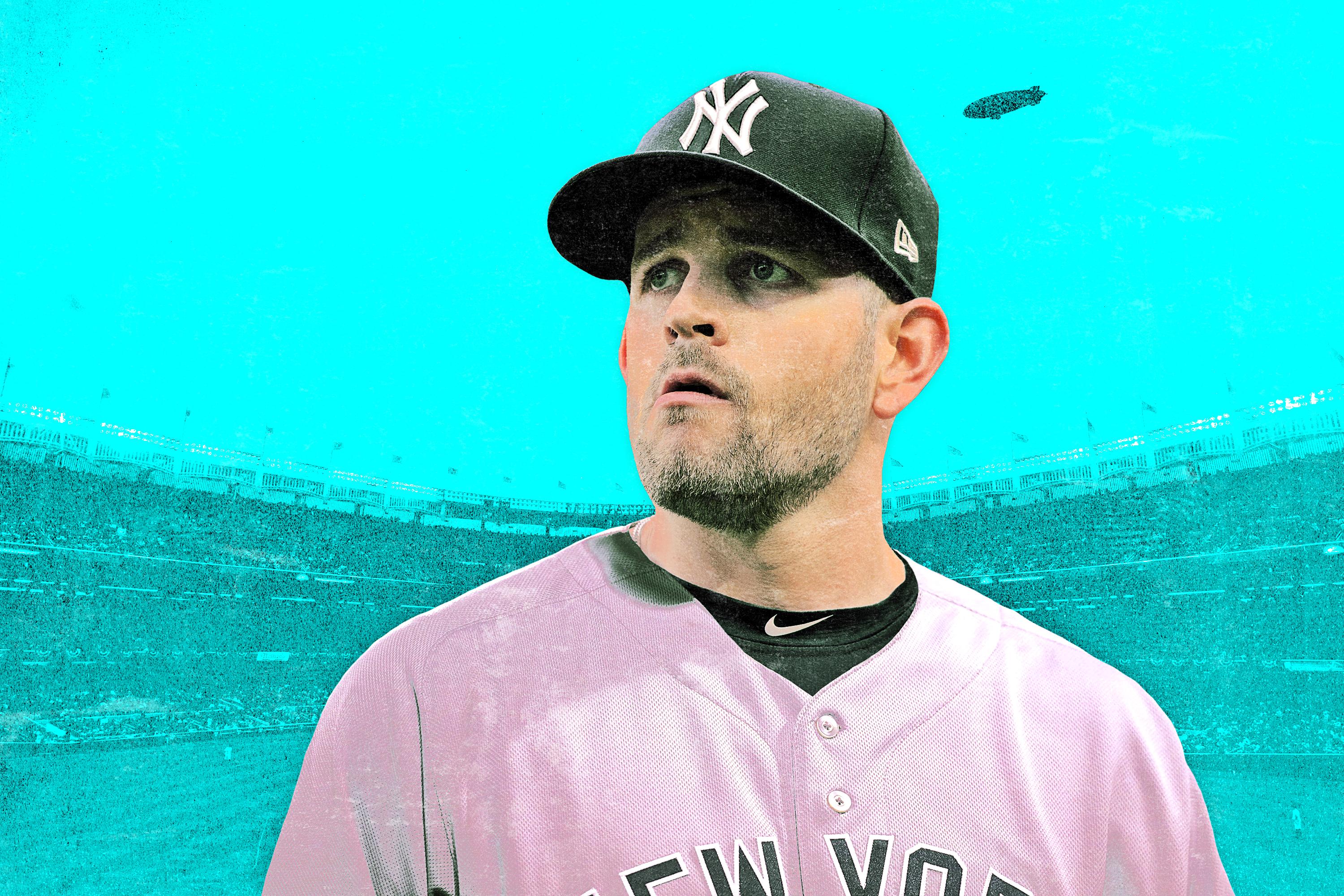
James Paxton is a bit of a Rorschach test in 2018—a 6-foot-4 lefty with a 96 mile-per-hour fastball onto which baseball evaluators can project their beliefs about pitching at large.
To Paxton pessimists, the newest New York Yankee, acquired in a trade with Seattle on Monday, seems a risk, as he’s treated like a top starter despite never producing consistently at that level. He’s never qualified for an innings title and has visited the disabled list in each of the past five seasons. He has consistently underperformed his fundamentals with his runs-allowed totals. He’s a deceptively old pitcher (entering his age-30 season) with just two remaining years of team control, and he’s never received a single award vote or made an All-Star team.
Yet even with those concerns baked in, it doesn’t take too much squinting to see Paxton as a legitimate top-10 pitcher in the sport. Anyone who can strike out 16 opponents and throw a no-hitter—as Paxton did in consecutive May starts—has the potential to compete for a Cy Young award, but Paxton is no one-week wonder. He’s trended toward acehood for three years now. And for a team that has seen an aged CC Sabathia lose playoff elimination games in consecutive seasons, he couldn’t don pinstripes at a better time.
The Big Maple, as the Canadian southpaw is cheerfully nicknamed, was once a touted amateur and a well-regarded prospect. The Blue Jays selected him in the first round, but he didn’t sign and some NCAA nonsense got in the way, so he ended up going to the Mariners in the fourth round the next year; he then placed in the back half of the top-100 rankings three years in a row, but his career sputtered in Seattle, with not enough strikeouts and too many walks, until 2016. Paxton began that season in the minors after a disastrous 10.80-ERA spring and then altered his arm slot, moving from an over-the-top to a three-quarters motion that brings the ball in a scything trajectory toward the plate. “It just feels natural coming out from that slot,” Paxton said at the time. “I was getting way too high [before].”
The difference is obvious in that comparison plot of his release points, and it’s obvious in his results. On a granular level, the most important action a pitcher can take is to throw strikes. Before his delivery change, Paxton recorded strikes on 60.9 percent of his pitches; since the change, he’s at 66.5 percent, one of the dozen best marks for a starter in that span.
The next step is for pitchers to convert those strikes into strikeouts and avoid walks—a seemingly simple combination that has also formed the basis of sophisticated pitching analysis for two decades. Here, too, Paxton’s little tweak transformed him into one of MLB’s best pitchers: His strikeout rate since 2016 equals Clayton Kershaw’s, his walk rate is a shade better than Jacob deGrom’s, and his per-pitch whiff rate has risen in each of the past three seasons.
And the third step for pitchers is to rely on those strikeouts and lack of walks to prevent runs. Here, Paxton has stumbled compared with his fellows at the top of those K and BB leaderboards. His park-adjusted ERA since 2016 is 14 percent better than average, but ranks only 33rd out of 120 qualifying pitchers, which is quite good but less indicative of dominance than all his other numbers would suggest.
Yet analysts have known for years that ERA is a less predictive measure of future success than other statistics on the same scale. One of those stats is fielding-independent pitching, which measures the worth of a pitcher by their strikeout, walk, and home run totals—the three true outcomes that they can control outside the influence of defense or batted-ball luck. Here, Paxton ascends to the upper echelon. The top 10 starters in park-adjusted FIP since 2016 feature nine aces plus Paxton, which means either the lefty is an extreme outlier or that he, too, boasts an ace-quality arm.
- Noah Syndergaard, 40 percent better FIP than average
- Chris Sale, 37 percent
- Clayton Kershaw, 34 percent
- Corey Kluber, 31 percent
- James Paxton, 31 percent
- Jacob deGrom, 30 percent
- Max Scherzer, 30 percent
- Luis Severino, 28 percent
- Stephen Strasburg, 27 percent
- Aaron Nola, 27 percent
Don’t believe in FIP? By deserved run average, Baseball Prospectus’s flagship ERA estimator, Paxton was 44 percent better than average in 2017 (fifth among starters) and 40 percent better (10th) in 2018. And the Steamer projection system tabs Paxton, who is still young enough to be at or near his peak, as one of the dozen best starters in 2019 by both FIP- and ERA-based WAR; even if you knock off 10 percent of his predicted value because of the additional injury concern he brings, the reduced totals still make him as valuable as Syndergaard and Nola. Even there, it’s possible that said injury concern is overblown: Paxton has never sustained a serious elbow or shoulder problem, and he made 31 starts between the majors and minors in 2016 and 28 in 2018. That’s not Nolan Ryan–level durability, but it’s all but impossible in today’s game to construct a top-tier rotation without any health-related questions.
It’s not, of course, a given that Paxton’s ERA will match his elite peripherals next season, but it’s not guaranteed that he will once again fall short, either. The mound is full of examples of pitchers who have seemed perpetual underperformers only to reverse the narrative without warning. From 2015 to 2017, for example, Nola’s ERA was worse than his FIP by more than half a run; in 2018, though, his ERA was better than his FIP by one of the largest margins (0.64 runs) for a qualifying starter.
New York is betting that Paxton will buck his trend, but even if he doesn’t and remains a no. 2 starter by results with the occasional gem, he will still prove a boon to his new rotation. Last year, the Yankees gave 23 starts to Sonny Gray, who pitched poorly enough that he’s in the midst of being evicted from the Bronx. They gave five starts to Luis Cessa and one to Chance Adams and 18 combined to the tantalizing yet mercurial combination of Domingo Germán and Jonathan Loaisiga. Overall, starters other than the top three of Severino, Sabathia, and Masahiro Tanaka produced a cumulative 4.71 ERA, and that was with midseason addition J.A. Happ helping stabilize the rotation after the trade deadline.
Even with this uncertainty at the back end, the Yankees rotation wasn’t bad last season—it ranked fifth in the majors in fWAR, one spot ahead of Boston’s—but it wasn’t notably strong, either, and certainly not “super” in the same vein as New York’s super lineup and super bullpen, in an American League full of superteams.
The early 2019 outlook forecasted more of the same: The Yankees might well break the single-season home run record they set last year, and the bullpen once again projected to be the majors’ best by a wide margin, but the starting rotation lacked both the depth and high-end talent to match that of their AL foes. Houston has two aces, with Justin Verlander and Gerrit Cole. Boston has the best pitcher in the American League in Sale, plus David Price. Cleveland has three ace types in Kluber, Carlos Carrasco, and Trevor Bauer.
New York had only one, but Brian Cashman entered this offseason with a clear shopping list, and the Yankees usually check off their bold-faced items. The free-agent pool still beckons, as Yankees fan Patrick Corbin, Happ, and Charlie Morton all might fit in the last open rotation spot in the Bronx. But with Kershaw re-signing in Los Angeles, unless Cleveland trades Kluber, Paxton will be the best pitcher to change teams this winter, and therefore a fitting addition for a contender embroiled in an arms race.
In return for Paxton, the Yankees sent three prospects across the country. Lefty Justus Sheffield, who came to New York in 2016’s Andrew Miller trade, ranks as a mid-top-100 prospect but elicits enough questions about his own command and future as a starter that he’ll need his own Paxtonesque renaissance to meet his pedigree. Neither of the two other involved players are big-name prospects (though righty starter Erik Swanson has posted stellar minor league numbers), so the Yankees essentially exchanged two depth pieces and someone with an outside chance of someday becoming as good as Paxton for the actual man himself.
The Big Maple’s overwhelming underlying numbers point to both his impressive transformation in recent seasons and his even-more-impressive potential for the years to come. When a pitcher with his rare talent becomes available, teams should pounce. This was the same logic Houston used to deal for Cole last winter, coincidentally also two seasons before his free agency, and the Astros sure don’t regret making that trade. Houston’s also happy to have traded for Verlander, and Boston for Sale, and so on—and in Monday’s trade, New York didn’t even have to surrender a consensus top prospect.
That doesn’t mean the trade will definitely work out in the Yankees’ favor, nor that Paxton will help bring his new team its first division title since 2012—but it does mean that the logic undergirding the move is sound and that a number of other teams might end up ruing their missed opportunity to add an ace in the making. The first big move of the 2018 offseason is complete, and the Yankees are winners in the market once again.

